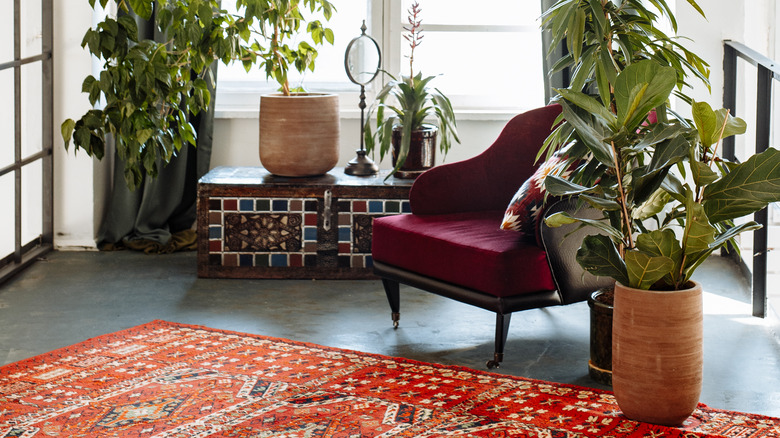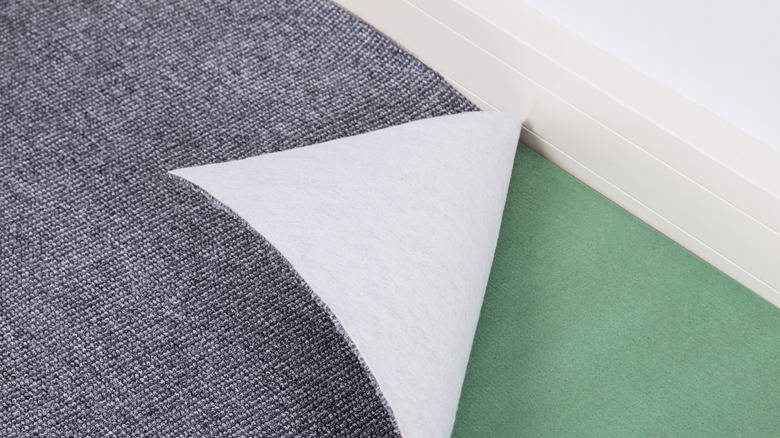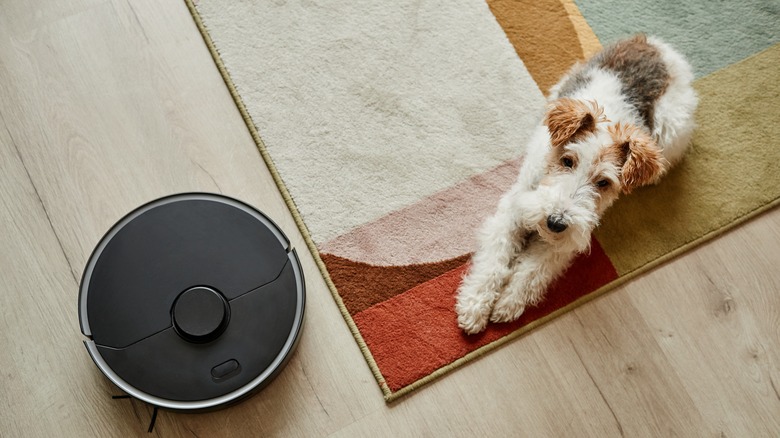Is It Actually Necessary To Get A Rug Pad?
Rugs are one of the most versatile design pieces you can add to a room. Placing one across any floor is a simple way to reduce noise and add color, dimension, and definition to the space. As noted by Ashley, rugs are an element that can be a perfect addition to any area by adding comfort and warmth as well as providing an anchor to furniture that would otherwise look afloat.
There's a rug for every budget, but finer ones such as Persian or Oriental rugs can be thought of as an investment, according to Benham Rugs. Regardless of its cost, a carpet can be cherished and kept in good condition so it can continue to serve your needs for many, many years. But one of the most important things you can do to prolong the life of a rug is to use a pad beneath it. And doing so will also offer a host of additional benefits.
Rug pads provide ample protection
Despite being covered by a rug, a floor experiences a lot of wear and tear — from foot traffic to paws with claws to chairs being moved around. But we can prevent most damage, be it scratches or other wear, by using a rug pad. Koeckritz Rugs recommends using padding because it also adds an extra layer of protection against spills that can penetrate the carpet, soaking into and staining the floor beneath. And actually, padding prolongs the life and preserves the aesthetics of a rug by preventing dents that can form due to the weight of the furniture.
To ensure the best coverage, proper measurement is key, World Market says, which recommends padding be 2 inches smaller than the actual rug. But size isn't the only factor. RugKnots suggests that the type of padding (usually felt or natural rubber) needed depends on the rug's material and the type of flooring beneath it. For instance, if your flooring is made of linoleum or has a natural smoothness to it, consider a pad that has a rubber-textured backup to hold onto the floor. On the other hand, get a dense pad if your carpet is hand-knotted or made from natural fibers.
Rugs pads add safety and function
The most obvious benefit to a rug pad is safety. A carpet that slips or bunches every time someone walks across it poses a serious hazard. The right padding can help keep rugs in place. Additionally, padding increases airflow, which is a reason to celebrate if you suffer from allergies or respiratory issues. According to The Rug Warehouse, by allowing air to better circulate, mold and odor-causing bacteria will have a more difficult time growing because dander, debris, and moisture won't get stuck under the rug.
Regular care such as vacuuming and tending to spills immediately will increase the lifespan of any carpet. Padding should also be cleaned periodically, especially in high traffic areas and in times of incidental spills and soilings. RugPadUSA recommends cleaning up drops by blotting up the wetness if the pad is made of felt or by wiping it away if it's made of rubber. They also recommend vacuuming the padding at least once or twice per year and sweeping beneath it annually. And if you shake your rugs outside, take the pad and shake it too. Your lungs will appreciate that!


